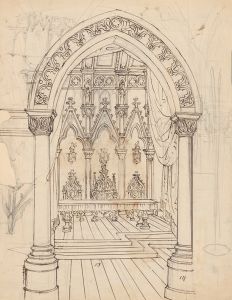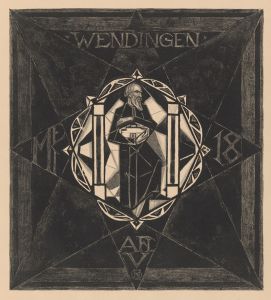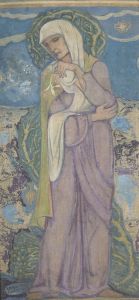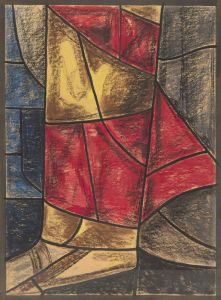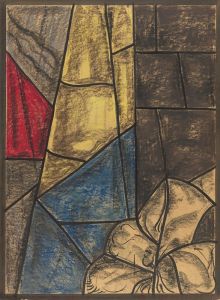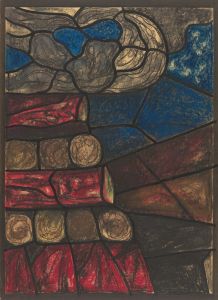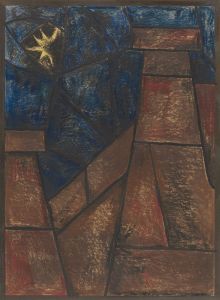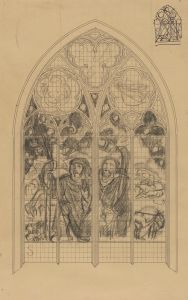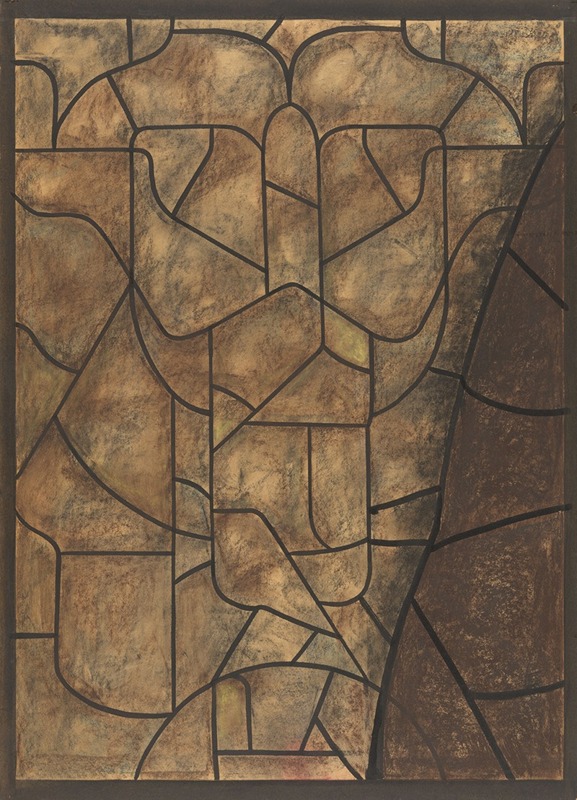
Ontwerp voor raam in het Noordertransept in de Dom te Utrecht 42
A hand-painted replica of Richard Nicolaüs Roland Holst’s masterpiece Ontwerp voor raam in het Noordertransept in de Dom te Utrecht 42, meticulously crafted by professional artists to capture the true essence of the original. Each piece is created with museum-quality canvas and rare mineral pigments, carefully painted by experienced artists with delicate brushstrokes and rich, layered colors to perfectly recreate the texture of the original artwork. Unlike machine-printed reproductions, this hand-painted version brings the painting to life, infused with the artist’s emotions and skill in every stroke. Whether for personal collection or home decoration, it instantly elevates the artistic atmosphere of any space.
"Ontwerp voor raam in het Noordertransept in de Dom te Utrecht 42" is a design for a stained glass window created by the Dutch artist Richard Nicolaüs Roland Holst. Roland Holst (1868–1938) was a prominent figure in the Dutch art world, known for his work as a painter, designer, and writer. He was particularly renowned for his contributions to monumental art, including stained glass windows, murals, and other decorative works.
This specific design was intended for the north transept of the Dom Church (Domkerk) in Utrecht, a historic Gothic cathedral that has been a central landmark in the Netherlands for centuries. The Dom Church, originally dedicated to Saint Martin, has undergone various phases of construction and restoration since its foundation in the 13th century. Stained glass windows have historically played a significant role in the decoration of Gothic churches, serving both aesthetic and didactic purposes by illustrating biblical stories and saints.
Roland Holst's design reflects his characteristic style, which often combined elements of symbolism and the Arts and Crafts movement. His work frequently emphasized harmony, spirituality, and the integration of art into architecture. While the specific details of this design are not widely documented, it is consistent with his broader body of work, which often featured intricate patterns, vibrant colors, and allegorical themes.
The creation of stained glass windows during Roland Holst's time involved close collaboration between artists and craftsmen. The artist would produce a detailed design or cartoon, which would then be translated into glass by skilled artisans. This process required precision and a deep understanding of both artistic composition and the technical properties of glass.
Roland Holst was deeply influenced by the social and artistic ideals of his time, particularly the belief that art should be accessible and serve a communal purpose. His stained glass designs were often commissioned for public or religious buildings, reflecting his commitment to creating art that could inspire and uplift a wide audience.
While the exact circumstances of the commission for this particular design are not well-documented, it is part of a broader tradition of stained glass art in the Netherlands and exemplifies Roland Holst's contributions to this field. His work remains an important part of Dutch cultural heritage, and his stained glass designs can still be found in various churches and public buildings across the country.
Further research into archival materials or specific records related to the Dom Church in Utrecht may provide additional context about this design and its intended implementation.





